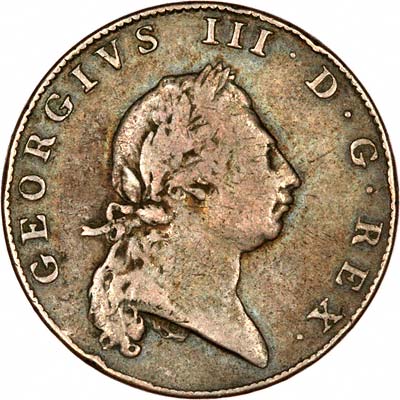| The Very Highest Quality Information... |
| Bermuda and Bermudan Coins |
|
| ||||||||||||||||||||||||||||||||||||
 | ||||||||||||||||||||||||||||||||||||
|
| ||||||||||||||||||||||||||||||||||||
 | ||||||||||||||||||||||||||||||||||||
|
| ||||||||||||||||||||||||||||||||||||
Discovery and Settlement
Bermuda was discovered by the Spanish in 1505 and was uninhabited at the time of its discovery. It was first settled by accident in 1609, when survivors from the shipwrecked Sea Venture found themselves marooned on the island. Whilst some left the following year on a ship they had constructed on the island, some remained behind and the first town, St Georges, was founded in 1612.
Following the English Civil War in 1649, King Charles I was beheaded. When news of this arrived, it triggered a civil war between the settlers on Bermuda, in which Royalist sympathisers emerged victorious. Puritans and anyone else who was considered disloyal to the Crown were expelled and forced to travel to the Bahamas, which was at that time was a recently founded haven for Parliamentarian sympathisers.
Salt Industry
The settlers in Bermuda initially tried to grow tobacco as a cash crop. However, the tobacco was of such low-quality that it was said that the cedar boxes that the tobacco was shipped in was worth more than its contents. However, the shallow waters surrounding the island and the nearby Turks and Caicos islands made salt harvesting easier than most places, and the salt mining industry became one of the largest in the world. Its usefulness in preserving fish caught in nearby waters made Bermuda an important trading hub.
Shipping
The presence of good quality cedar wood and Bermuda’s strategic location encouraged a small shipbuilding industry to develop on the island. Local shipbuilders developed a new type of ship called the ‘Bermuda Sloop’ which became the bane of enemy merchant vessels during Britain’s wars against the French, Spanish and Americans, and privateering became a very profitable enterprise during these periods of war, and useful trading vessels during times of peace.
A Royal Dockyard was constructed on the island as an important naval base for the Royal Navy, but this was closed in the 1950s when Bermuda’s status as a strategic location had diminished, and it was no longer considered the ‘Gibraltar of the West’.
Tourism
The tourism industry in Bermuda began in the 19th Century, although the limits of transportation technology and its expense limited its customers to those of the wealthy elites. However, the popularisation of air travel in the mid-20th Century was a boon for its development, and it is now one of the Bermuda’s most important industries, along with offshore finance.
The Assassination of Governor Sir Richard Sharples
A notorious incident occurred in 1973 when the governor of Bermuda was shot dead by Black Power member Erskine Durrant Burrows. Burrows was hanged, along with an accomplice in 1977 for this and 3 other murders, resulting in 3 days of rioting on the island. The executions were the last to have taken place under British jurisdiction anywhere in the world.
Recent History
Another controversy arose recently when 4 Uyghur former Guantanamo Bay detainees were given asylum in Bermuda without consulting the British Government. Premier Ewart Brown also failed to consult his own cabinet over the decision, leading to accusations that he was ‘running a dictatorship’. Despite the controversy, he survived a vote of no confidence and the former detainees were allowed to stay. Brown stepped down as Prime Minister the following year.
Bermudan Coins
Bermuda has an important place in numismatic history as being the source of the famous ‘Hogg Money’ series of coins issued for circulation in the English colonies in the Americas. These coins, issued in various denominations, feature a pig on the obverse (hence the name). Bermuda was associated with the hog because prior to widespread human settlement, wild pigs were plentiful on the island and used as a source of meat by visitors and early settlers.
Spanish currency was also widely used here and in the rest of the Americas throughout the 17th and 18th Centuries, alongside British currency. Matthew Boulton’s Mint in Soho produced a large number of penny and half penny tokens featuring a ship on the reverse representing the importance of shipping to the Bermudan economy.
Bermuda formally adopted Sterling in 1842, and this was used (with the occasional local crown issue) until 1970, when Bermuda adopted the Bermuda dollar at 100 old pence to the dollar, one year before Britain decimalised.
Coins of 1c, 5c, 10c and 25c are issued, as well as $1 coins. Interestingly, the original dollar coin, introduced in 1983, could easily have been confused with the UK pound coin, and must have caused some chagrin to people in Britain who were given these instead of the more valuable £1 coins! This coin was withdrawn in 1988, replaced by a larger but thinner coin similar to the Canadian Dollar coin.
For Sale and Wanted
If you are interested in coins from Bermuda please see our product index:-
Bermudan Coins
Gold Coins
We also have gold coins from Bermuda on our taxfreegold website:-
Bermudan Gold Coins
| ...at the Lowest Possible Price |
|
32 - 36 Harrowside, Blackpool, Lancashire, FY4 1RJ, England.
Telephone (44) - (0) 1253 - 343081 ; Fax 408058; E-mail: info@chards.co.uk The URL for our main page is: https://24carat.co.uk |
Web Design by Snoop |